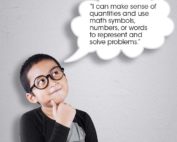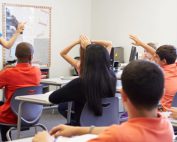What is Learnership?
Learnership combines the words and meanings of the words “learner” and “ownership.” Together, they embody the elevation of learning to learner ownership. Someone who has true learnership is one who self-directs, self-evaluates, self-reflects, and self-controls their own learning. We are posting new articles every week so make it your routine to check-in frequently. Or, subscribe to The Learnership Review and receive monthly emails so you never miss a thing.
How to Help Students Own What They Are Learning
In this article you will learn...
- We as teachers need to flip the typical approach to curriculum planning on its head to focus less on what we need to teach and more on what students need to learn.
- The best place to start developing ownership in curriculum is by assuring that all learning is driven by a standards-based curriculum with measurable and achievable outcomes that are accessible to all students.
- Three strategic learning practices can greatly help students achieve ownership of the curriculum and thereby elevate their academic achievement.
How to Create a Culture of Achievement
In this article you will learn...
- Teachers can increase student motivation and achievement by increasing student ownership.
- Teachers can develop student ownership by integrating the strategic learning practices across all four areas of a framework for elevating achievement—Curriculum, Instruction, Assessment, Climate.
- When implemented together, these strategic learning practices can make a significant impact on student ownership, learning, and achievement.
The Most Crucial Decision Teachers Make Every Day
In this article you will learn...
- Our greatest power as teachers is in our decision-making.
- Teachers make important decisions across four broad areas: curriculum, instruction, assessment, and climate, which make up an integrated learning framework.
- The most crucial decision teachers make is how to share this information with students.
Three Ways Students Interpret Their Role
In this article you will learn...
- Students pick up on cues from the teacher, other students, their parents, and even society that they use to interpret their role in the classroom.
- Some students think their role is to “do” school. Other students begin to “understand” school. And, a few realize that their role is to “own” their learning.
- Students who are supported to take full ownership of their learning will, in tandem, build intrinsic motivation.
12 Questions Your Students Should Be Able to Answer
In this article you will learn...
- Students, as well as teachers, must be able to answer key questions about their learning.
- These questions fall into four broad areas: curriculum, instruction, assessment, and climate, which make up an integrated learning framework.
- Students must be supported across the entire learning framework in order to take full ownership of their learning.
3 Tools for Building an Ownership Mindset
In this article you will learn...
- Students have the ultimate power to own their own learning.
- An ownership mindset is the key that allows students to become active participants in learning.
- The three most important tools for building an ownership mindset are to delegate the authority, build the capacity, and entrust the responsibility for learning to the students themselves.
What are people saying about Elevated Achievement Group?
Relevant and valuable information that we can put into practice.
Can you imagine building an environment full of motivated, engaged, and eager students who own their learning?
We can.









